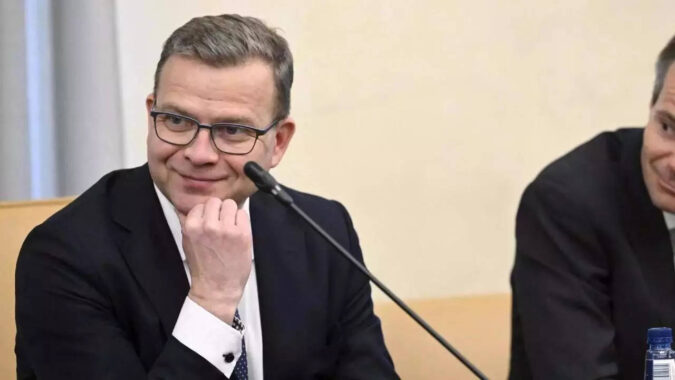HELSINKI: Nearly two weeks after his party narrowly won Finland’s general elections, centre-right leader Petteri Orpo pushed ahead Friday with the task of cobbling together a coalition after getting the green light from parliament.
Orpo said he hoped to indicate by May 1 as to which parties would join the lineup after the legislature entrusted him with forming the next government.
On April 2, his party ousted a left-of-centre coalition led by Sanna Marin’s Social Democrats.
The SDP fell to third place with 43 seats in the 200-member parliament, behind Orpo’s National Coalition with 48 seats and the far-right Finns Party with 46.
Finnish politics have a long history of coalition governments, although by tradition the largest party takes the prime minister’s job.
Orpo, 53, gave no indication as to which side of the political divide he wanted to ally himself with.
His main options are a coalition across the political divide with the SDP, or a rightwing government with the Finns Party.
“The key question is how we secure the Finnish welfare society, its equal, good, high-quality services. In my thinking, this is based on a healthy public economy and a growing economy,” he told a news conference.
Orpo said he had sent all parliamentary groups a list of 24 questions to “map out” their views on a range of issues.
Responses are expected by Tuesday, but Orpo said he had not set a deadline for forming a government base.
“It is more important to find certainty about the basis we’ll go forward with rather than having a specific date, but it should probably be ready around May Day.”
Orpo said that after the elections he had been in contact with the other parties “pretty equally”.
While the Finns Party is closer to the centre-right when it comes to economics — the most important election issue for Orpo — allying with the far right would make it harder for him to find other parties to build a majority.
Marin, 37, a popular but polarising figure, announced last week she planned to step away from the political limelight, quitting as party leader in September but remaining an MP.
Orpo said he hoped to indicate by May 1 as to which parties would join the lineup after the legislature entrusted him with forming the next government.
On April 2, his party ousted a left-of-centre coalition led by Sanna Marin’s Social Democrats.
The SDP fell to third place with 43 seats in the 200-member parliament, behind Orpo’s National Coalition with 48 seats and the far-right Finns Party with 46.
Finnish politics have a long history of coalition governments, although by tradition the largest party takes the prime minister’s job.
Orpo, 53, gave no indication as to which side of the political divide he wanted to ally himself with.
His main options are a coalition across the political divide with the SDP, or a rightwing government with the Finns Party.
“The key question is how we secure the Finnish welfare society, its equal, good, high-quality services. In my thinking, this is based on a healthy public economy and a growing economy,” he told a news conference.
Orpo said he had sent all parliamentary groups a list of 24 questions to “map out” their views on a range of issues.
Responses are expected by Tuesday, but Orpo said he had not set a deadline for forming a government base.
“It is more important to find certainty about the basis we’ll go forward with rather than having a specific date, but it should probably be ready around May Day.”
Orpo said that after the elections he had been in contact with the other parties “pretty equally”.
While the Finns Party is closer to the centre-right when it comes to economics — the most important election issue for Orpo — allying with the far right would make it harder for him to find other parties to build a majority.
Marin, 37, a popular but polarising figure, announced last week she planned to step away from the political limelight, quitting as party leader in September but remaining an MP.
